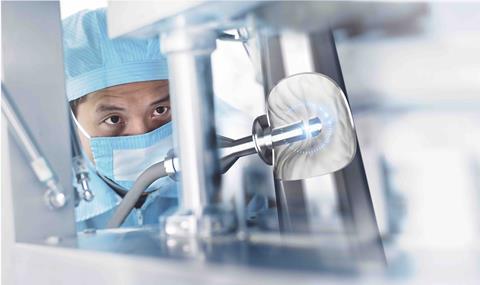With its high-quality quartz materials for cuvettes and laboratory probes, HELLMA Analytics enables researchers to perform extremely precise optical spectroscopy measurements.
It is hard to imagine a lab, academic or industrial, that operates without some form of optical spectroscopy, such as UV/Vis, NIR, FTIR or Raman. Using light to analyse and characterize samples has become routine practice for researchers in a wide array of sectors. Usually, it is the spectrometer that attracts all the attention when it comes to improving performance or expanding the application range.
Much less visible, almost literally, is (the importance of) the material that forms the interface between light, sample and detector. That material should be highly transparent, so the incoming light and the outgoing signal are not distorted. It should also be chemically inert to prevent unwanted reactions with the sample, mechanically robust and structurally well-defined to enhance reliability and reproducibility of the measurements.
Cuvettes
With its long history in the manufacturing of quartz products, this is very familiar terrain for HELLMA, a leading supplier of optical materials and components. ‘We offer high quality quartz cuvettes that allow extremely precise quantitative measurements, such as determining the concentration of a sample’, says Oliver Mandal, Product Manager at HELLMA Analytics. Quartz offers desirable properties for this purpose. ‘It is highly transparent and because it is fairly inert, it does not adulterate and thus will last long’, Mandal points out.
But there is more to it. ‘The production process of our cuvettes relies on assembling each cuvette out of single parts that are produced with extreme precision, which ensures high reproducibility of your measurements.’ A big difference with plastic cuvettes that are produced using moulding, according to Mandal. ‘That is great for low cost, mass production, but there will always be deviations. Cuvettes will slightly differ from each other, for example in the thickness and planarity of a window. These cuvettes are perfectly suitable for simple, routine measurements. But if very specific measurements are required, you need cuvettes that can match that level of specificity.’

Reference materials
The quartz interface is however more versatile than just cuvette-based, “snapshot” measurements. Continuous monitoring of processes can also benefit from the exquisite properties of these materials. To this end, HELLMA offers a wide range of laboratory probes containing quartz measurement heads. ‘Again, these offer very high precision, the best throughput of light and the path length of the light can be varied according to the specific spectrometry technique’, says Mandal. The probes are suitable for analysis of gaseous, liquid or solid samples and the housing, materials and connections can be adapted to the specific conditions in the reactor.
Finally, the quartz materials form the basis of an often overlooked, but crucial part of many production processes: the so-called reference materials. Mandal: ‘Spectrometers need to be calibrated and particularly for pharmaceutical applications, regular checks are required to make sure that the signal is at the right position and has the right intensity. We offer sets of reference materials certified by a laboratory that is approved by the regulatory authorities.’ Clearly, when it comes to quartz materials for optical spectroscopy, there really is more than meets the eye.













Nog geen opmerkingen